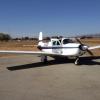All Activity
- Past hour
-
SOLD
-
I think the problem with trying to characterize the proclivities of the FAA Medical Branch is that trends don't matter so much as the n=1 of your own experience. They might be reasonable and you could still be the exception; it's cold comfort if you can't fly or have to wait an unreasonable amount of time. And probably some people have suffered less from that Eye of Sauron than others and got away with things they could have been dinged on. I've been on both sides in the military version of this. Actually, 3 sides if you count the programmatic side and being accountable to multiple higher-up interests, sometimes with contradictory goals. We all want to be an exception to the rules, esp. dumb rules. I'm guilty. But practical safety of your flight and your passengers should be an important goal... You might be surprised how debilitated some people are by sleep apnea. Don't even know it for years. So I wouldn't not get it dealt with, regardless of what else you do. Dealing with absurd insurance company and bureaucratic regulations is another matter. I understand the idea of the sleep apnea guidelines, and at least there is a defined pathway to SI. But it is tedious. Basic Med really does seem to shine in this area. It is definitely worth being proative and managing your communication and disclosure. I'm not saying lie, I'm saying be proactive. I'd second finding the best AME partner you can, if you go class I-III. There are some services that will help you (I heard an interview with a former mil pilot become doc become AME who made an analogy with a checkride... I think he had a consulting company. Disclaimer, I've never used this). The advice about attorneys is interesting, and smells right. I'll definitely do that if I end up needing it...
-

Aircraft for sale denied medical
Rick Junkin replied to Little Dipper's topic in General Mooney Talk
Thread creep - This discussion makes me wonder how many folks are out there flying without a valid medical, or even a valid certificate. I know of one who was (he's no longer flying) so I have to assume there are more. There was a fatal accident case a couple of years ago where a guy never finished his training for a private certificate, never got a medical, but bought an airplane in which he ultimately killed himself and his girl friend. But that's not the kind of person I'm thinking of. My question is more about people who are competent pilots that get caught up in the bureaucratic process and decide it's worth the risk to "do their own thing" regardless of what the system says. You know, anarchy. I'm not advocating for it, but I wonder how many folks have made that conscious decision. I'm guessing there are more than we might think. I can see where a person would make that call. Anybody know where that kind of data might be available? It's probably hard to find outside of people who have lost their bet with the universe and got caught in an enforcement action. -

Basic Med popularity on MooneySpace
dkkim73 replied to Bolter's topic in Miscellaneous Aviation Talk
You (generic you, not DXB who clearly understands this scene) will find benign mistakes in clinical notes as well (misunderstood what you were saying) which weren't particularly germane at the time but could imply problems downstream. Esp. with auto-scribe software and hurried, often ex post facto, documentation of visits, etc. So requesting corrections is reasonable and most conscientious practitioners haven't given me much pushback. -
It's great to find an occasional AME who wants to help pilots, but never forget they are accountable to the FAA Medical Branch, not to you. Carefully worded factual information from medical specialists can greatly help address nonissues capriciously flagged by the FAA in the medical record - I myself have played this role a couple of times to help pilots. However nothing stops a frivolous medical certification challenge by the FAA better than a lawyer showing them why they are about to create a bunch of work for themselves, only to arrive at an embarrassing outcome before an NTSB judge (or in extreme cases even a civil suit in federal court). I will never communicate with the FAA medical branch again except through one of a handful of attorneys they know well. No issue is too small to get a lawyer when dealing with these folks. Doing so from day one would have saved me a ton of hassle and worry - money extremely well spent. One can inadvertently dig the hole much deeper by going it alone.
- Today
-
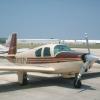
Aerocruz 100 for Mooney Ranger
cliffy replied to Fysiojohn's topic in Vintage Mooneys (pre-J models)
Looks pretty good -

Flaps fail to retract on Ground (1990 J)
Yetti replied to DC_Brasil's topic in Modern Mooney Discussion
I had to do the contact cleaner twice on the 50 year old F model. Then it was the relay. The cool thing about the relay was there were two sides to it. So I just switched wires to the other side. -
Chance joined the community
-
EXRM joined the community
-
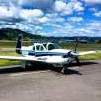
Flaps fail to retract on Ground (1990 J)
Ragsf15e replied to DC_Brasil's topic in Modern Mooney Discussion
You have to take the one piece belly off. Normally im a fan of contact cleaner spray and deoxit, however, these switches are available and relatively cheap at the electrical supply places online. Mine had a dead spot and initially the contact cleaner worked, but only for a week and a couple flights. I had to take the belly off twice to eventually go back a replace the switch which I probably should’ve done the first time. -
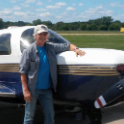
Basic Med popularity on MooneySpace
midlifeflyer replied to Bolter's topic in Miscellaneous Aviation Talk
You are right about there being not more than a handful. There are probably far more consulting physicians than lawyers who are truly competent at this. Lawyers are better when the medical problem becomes a legal problem, but that's the thing we want to avoid if possible. But I agree - if it's important, get some professional advice. A good senior AME leading the way is worth their weight in gold, but we don't always have that. -

Flaps fail to retract on Ground (1990 J)
Yetti replied to DC_Brasil's topic in Modern Mooney Discussion
The belly panel. It's all one. Oh and lube trim U joints and such. It probably does not need to be greased that often but every other time turns into never. -
Flaps fail to retract on Ground (1990 J)
tls pilot replied to DC_Brasil's topic in Modern Mooney Discussion
Agree. The contact cleaner you mention is ok. But the DeoxIT 5 is a superior product. Available on Amazon. I would hope the jack screw is greased at annual?? what access panel on a longbody gives access to the flap jackscrew? -
Definitely don't sell your airplane or give up. Definitely do prepare for the very worst from the FAA Medical Branch and act proactively. If the process went smoothly for you without expert legal representation, you got very lucky. Like many if not most bureaucrats, the docs at the NTSB medical branch care much less about actual service than creating an appearance of usefulness - their priority is finding he path of least resistance to creating a facade of protecting public safety. Their fundamental laziness and indifference, which are the only things that would would make a licensed physician take that kinda job in the first place, also make them cave pretty easily when an astute attorney appears capable of creating extra work for them or exposing their rank incompetence before an NTSB judge. My message is not just that the NTSB Medical Branch is often capricious in its actions against pilots but also that they have vulnerabilities that provide a means to manage the serious threat they pose to your medical certificate. Also it is best to do everything possible to avoid the SI hellhole in the firstplace.
-
I am not an ageist. I have flown with a 80+ CFII (started flying at the end of WWII). Loved the guy. So much wisdom to impart. On occasions he flew in a questionable manner - no point in providing examples. It happens. Of course I see that in younger pilots - but not so much CFII.
-
I helped a buddy in buy a Cherokee 140 from them that had a freshly painted H-Stab. Turns out that the entire stab had several cracks. The cracks were bondo’d over and painted. Owner needed to buy a serviceable tail. Indy said sorry… -Matt
-
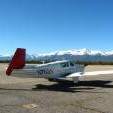
Aircraft for sale denied medical
Vance Harral replied to Little Dipper's topic in General Mooney Talk
Well, as with any large, bureaucratic organization, it's hit or miss. My OSA SI, and a friend's SI for a stent, were relatively painless. Good experience with the AME that handled the process, reasonably prompt response from CAMI, requirements well-documented and evidence thereof accepted without further question. SI in-hand after a few weeks for me and a few months for my friend. There's no doubt others have bad experiences, and I'm sure one's likelihood of a good/bad experience varies from year to year as staff, administrators, and the executive branch change. But I also think it's important to give counterpoints to the sort of guaranteed-gloom-and-doom outlook other folks make here, because that sort of panic is exactly what leads people to conclude they have to sell their airplane and give up flying, when it's not actually the case. No quarrel from me about moving to BasicMed (or MOSAIC Sport pilot now) once a standard medical is obtained. But a subset of us want to preserve the legal right to offer paid ferry services, fly turbo Mooneys above 18,000, and so on. -
Aerocruz 100 for Mooney Ranger
hammdo replied to Fysiojohn's topic in Vintage Mooneys (pre-J models)
-
Basic Med popularity on MooneySpace
Fly Boomer replied to Bolter's topic in Miscellaneous Aviation Talk
Just have to stay in front of it. Nice stats! -

Basic Med popularity on MooneySpace
Rick Junkin replied to Bolter's topic in Miscellaneous Aviation Talk
My first cancer diagnosis prompted me to switch. I had a valid Class 2 with a special issuance for obstructive sleep apnea at the time so I immediately transitioned to BasicMed. This move preserved my ability to keep flying when my doc and I judged I met the requirements of paragraph 61.53, and never having to worry about a future Class 2 or 3 being denied or submitting to the ass pain associated with the recurring reporting and pile of documentation OKC requires. It was quite an easy decision and transition. I briefed my primary doc using the materials AOPA provides, answered a few questions she had and she was immediately on board. After surgery and adjuvant cancer treatment, a later bout with a different cancer that required surgery, and a total hip replacement, my doc and I are still making excellent informed decisions on when I am and am not good to fly without needing the okeedokee from a remote government official who has never seen me. I can't fly for hire anymore, but I'm fortunate to be retired and not in financial need. BTW, the score is Junkman - 2, Cancer - 0. I'm hoping that remains as a final score. -
Aerocruz 100 for Mooney Ranger
hammdo replied to Fysiojohn's topic in Vintage Mooneys (pre-J models)
3m vinyl overlay that looks like carbon fiber… -Don -

Basic Med popularity on MooneySpace
ArtVandelay replied to Bolter's topic in Miscellaneous Aviation Talk
My PCP is a pilot, so that makes it a lot easier. Also my checkups mostly consist of us talking about aviation. -

Flaps fail to retract on Ground (1990 J)
Yetti replied to DC_Brasil's topic in Modern Mooney Discussion
For the limit switches go to Wally world and get the red can of "Contact Cleaner" sometimes called "Electronics Cleaner" Spray vigorously into the switch while exorcising them. While you are there clean off the jack screw and apply new grease and run it in and out a couple of times. Probably has not been done since the plane left the factory. Same should work on your Stall Indicator on the wing. May need the little red tube to get inside the box and hopefully direct at the limit switch. -
Once can and should write out a narrative for the clinician to document and sign if they are comfortable with its veracity. It's nice if someone with a medical background writes the narrative - I have personally done it for others in need. Also electronic medical records (e.g. Epic) do allow entry of edits and addenda well after the note is signed at the time of the visit - folks should not hesitate to ask for this to be done if necessary. It is also a very wise alternative to have one of the handful of lawyers nationally who are versed in aeromedical issues guide the clinician on the documentation the FAA wants to see. This approach costs money, but one should never leave anything to chance when dealing with the FAA Medical Branch - be as proactive as possible. They are not your friends - just lazy bureaucrats tasked creating a fake facade of protecting public safety.
-
Aerocruz 100 for Mooney Ranger
Fly Boomer replied to Fysiojohn's topic in Vintage Mooneys (pre-J models)
By "overlay" do you mean a thin carbon fiber sheet that is glued or screwed to the underlying aluminum panel? -
This is good stuff. I will try this process as you described. BTW, when I am exercising the autopilot in the hangar, I activate my electric standby vacuum pump to spin the attitude gyro. Thanks again.
-
Balance weights for an encore upgrade.


